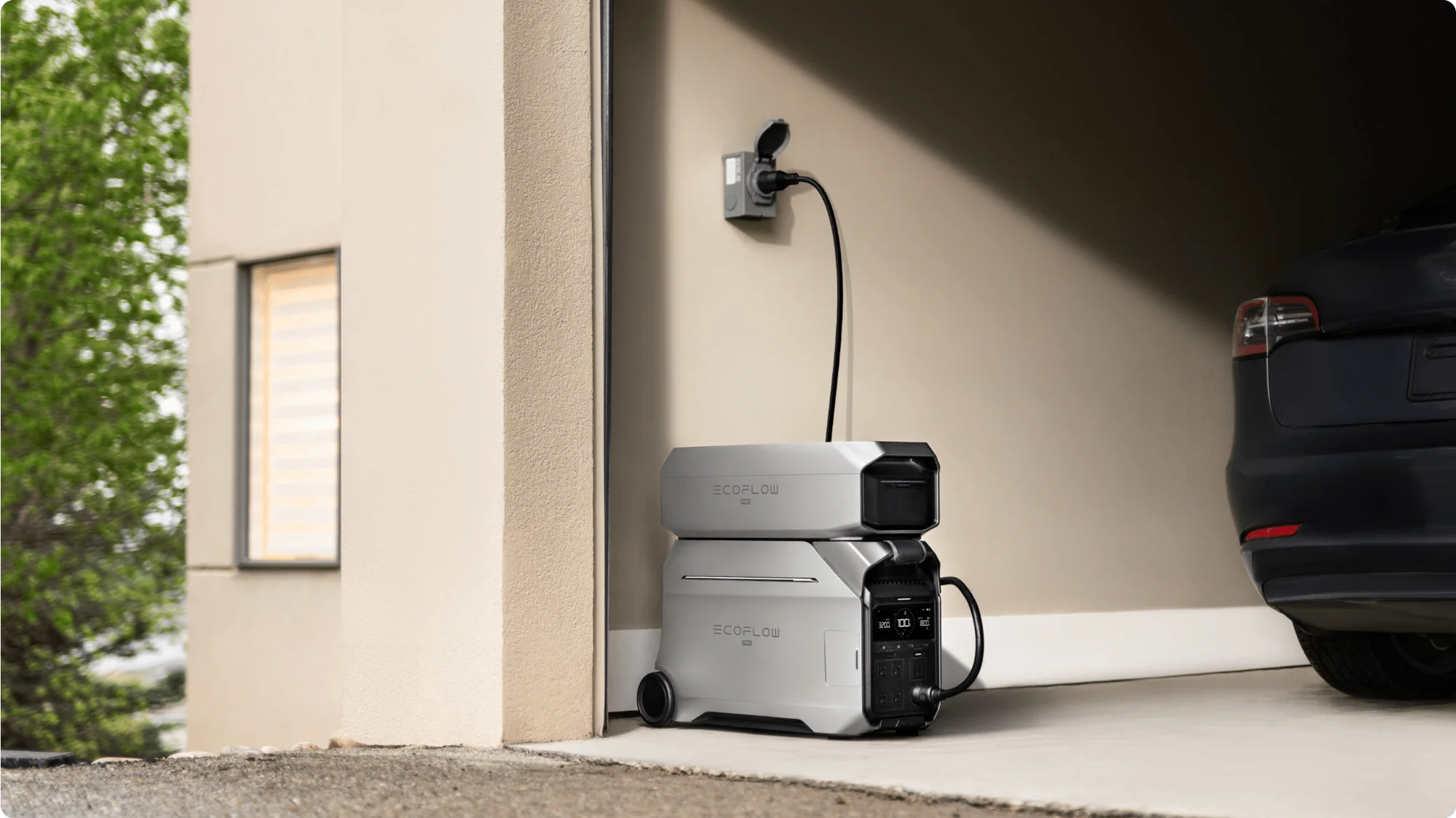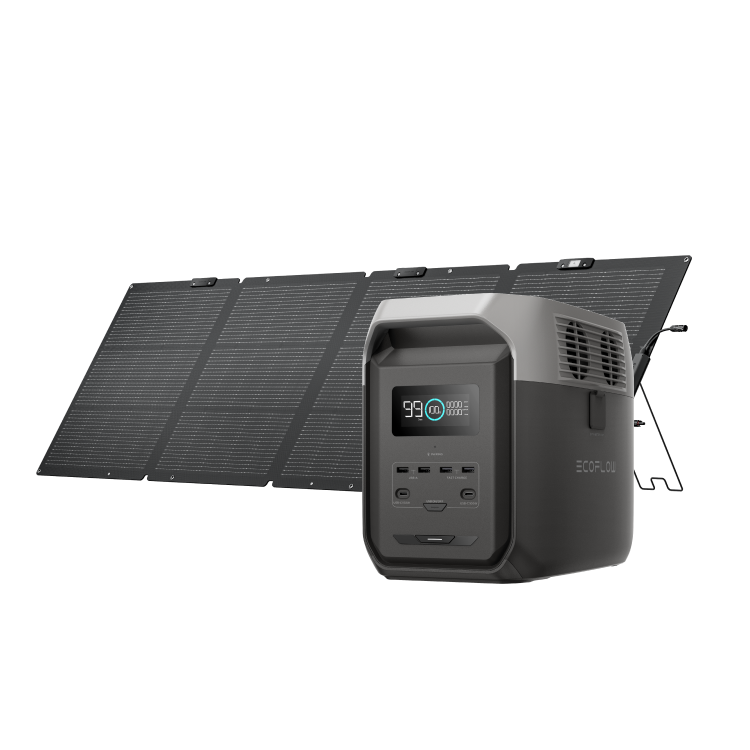Why Rolling Blackouts Are a Dire Problem for California Residents
In California, a rolling blackout is more than just an inconvenience. It's a planned power outage that utility companies use as a last resort to prevent the entire electrical system from collapsing when electricity demand is too high. If you live here, you have likely experienced the disruption these events cause firsthand. Beyond the immediate hassle, however, these blackouts have serious consequences for public health, safety, and the local economy. It's important to understand the specific reasons they occur and to recognize the true cost they impose on residents across the state.
Four Key Causes of California's Rolling Blackouts
Rolling blackouts don't just happen for no reason. These are direct responses to a few issues that were causing California's power systems to fail. Here are the main reasons why there isn't enough energy.
High Demand During Heatwaves Strains an Aging Grid
Right now, a simple imbalance is the main reason. Millions of air conditioners turn on during big heatwaves, which makes the demand for electricity far exceed the supply, especially in the late afternoon and early evening. A lot of the state's electrical equipment is decades old and wasn't made to handle the long, intense heatwaves that happen all the time now. Because of this imbalance between rising demand and an old system, planned shutdowns are needed to keep the grid from going down completely.
Extreme Weather Fuels Wildfires and Grid Instability
The problem is getting a lot worse because of climate change. Record-breaking heat waves make it more expensive to cool down. At the same time, the hotter and drier weather makes flames happen more often and cause more damage. These fires can damage important power lines and tools. Utilities may also use a Public Safety Power Shutoff (PSPS) to cut power to certain places on purpose during windy weather to lower the risk of fire. Sometimes, a PSPS can cut power to an area for days. This is done to keep people safe.
The Evening Gap in Solar Power
California gets a lot of its power from the sun, which makes things tricky. A lot of energy is made by solar panels when it's sunny outside. But when the sun goes down, this huge power source goes away, just as energy use is at its highest because people are going home. To make up for the lack of wind power, standard power plants have to start up very quickly. This daily cycle of high and low power from the sun is very hard on the grid because there aren't enough big batteries to store the energy for use in the evening.
Gaps in Long-Term Energy Planning
Lastly, the problem has been made worse by poor long-term planning. In the past, state agencies have either not thought about how much energy they would need in the future or had to wait for regulators to approve new, stable power sources. Because of this, the state doesn't have enough energy saved up to use in case of a grid disaster. These planning problems make it take longer to do the important job of making the power grid more reliable for the future.
How Rolling Blackouts Impact Daily Life in California
A power outage changes many parts of daily life. It can put your health at risk, cost you money, and get in the way of school and work. People who are already weak are often hit the hardest by these problems.
Serious Risks to Health and Safety
When the power goes out in the summer, not having air cooling can be dangerous as well as uncomfortable. Heat-related illnesses, like heatstroke, are much more likely to happen, especially to older people, kids, and people who already have health problems. A lot of people in California also depend on electric medical gadgets like ventilators and dialysis machines. For them, losing power can quickly turn into an emergency that could kill them. Even more dangerous are wildfires, which can shut down contact networks, making it impossible for people to get emergency alerts or call for help.
Financial Losses for Businesses and Families
It costs a lot of money for blackouts to happen. As soon as the power goes out, stores have to close. To save money, grocery shops and restaurants must store food properly; otherwise, they will have to throw away what has gone bad. An outage means lost money for people who work from home or run businesses from home. Most small companies and low-income neighborhoods can't afford expensive backup power systems, so they are the ones who suffer the most financially when the power goes out.
Disruptions to School and Remote Work
A reliable power source is now necessary because so many people work and learn from home. Blackouts make it hard for students to keep up with their schoolwork when they are taking online classes. A power loss means that remote workers lose a workday and are less productive. This makes the gap bigger for families who can't afford backup engines or battery systems. This keeps them from going to school or work and makes inequality worse.


The Long-Term Damage Caused by Rolling Blackouts
Beyond the immediate problems for residents, frequent blackouts create broader, long-term risks for the state.
Harm to the Environment and the Power Grid
When the power goes out, many people rely on personal generators that run on gas or diesel. These machines release harmful pollutants into the air, which directly contradicts California's environmental goals. At the same time, the constant process of shutting down and restarting parts of the electrical grid to manage outages causes significant wear and tear on essential equipment, potentially shortening its lifespan and leading to more failures in the future.
Loss of Public Trust
Recurring power failures also damage the public's trust in utility companies and state regulators. When residents cannot depend on a fundamental service like electricity, it creates a sense of instability. Over time, this erosion of confidence can become a serious issue, even influencing whether people decide to stay or move away from areas with unreliable power.
Damage to California's Reputation
Finally, the inability to provide consistent power hurts California's reputation as a global leader in technology and innovation. For a state known for its cutting-edge industries, frequent blackouts send a negative message. This can make it more difficult to attract and keep talented workers and new investments, threatening the state’s economic future.
Four Ways to Make California's Power Grid More Reliable
There are many things that need to be done to fix California's energy problems, from making new technologies to changing how people use power. Here are the most important things that can be done to stop blackouts in the future.
Build More Energy Storage and Use Diverse Power Sources
Building more large-scale battery solutions is an important step. These facilities are necessary to store solar generator that is made in excess during the day so that it can be used in the evening, when demand is highest. Adding more green power sources, like geothermal and wind power, will also help make the electricity supply more stable and reliable around the clock.
Upgrade to a Smarter, More Modern Power Grid
The state's old power grid needs to be fixed right away. Modern digital technology is used in a "smart grid" to track the flow of energy in real time. This helps operators predict and avoid power outages. Building more microgrids is another important option. Microgrids are small, local power grids that can separate from the main system and work on their own. In the event of a bigger power outage, this can keep hospitals and fire stations powered up.
Encourage and Reward Energy Conservation
Programs that involve residents are also part of the solution. "Demand response" programs, for example, offer financial rewards to homes and businesses that voluntarily use less electricity during peak hours. Broader public education about simple conservation habits, like pre-cooling a home before the afternoon or running dishwashers at night, can also make a huge collective difference in reducing strain on the grid.
Improve Planning and Coordination Between State Agencies
Finally, California's various energy agencies must work together more effectively. Better coordination and more accurate long-term planning between groups like CAISO and the California Public Utilities Commission (CPUC) will help speed up the construction of the power plants, storage facilities, and transmission lines that the state urgently needs to ensure a stable power supply.


Advocate for a Resilient Energy Future!
There are a lot of problems that come with rolling blackouts in California. They affect public health, the economy, social justice, and environmental growth. The reasons are deep-rooted in old infrastructure, a changing climate, and the difficulties of a changed energy system. But the effects can be felt right away in businesses, houses, and schools across the state. To solve this problem, policymakers, utility companies, and the public need to move quickly and together to create a more reliable, long-lasting, and fair energy system for everyone in California.
FAQs About Rolling Blackouts in California
Q1: What is the difference between a rolling blackout and a normal power outage?
A normal power outage is typically an accident caused by something like a hurricane, a car crash hitting a utility pole, or equipment failure. A rolling blackout, however, is a planned and controlled shutdown. Utility companies start them intentionally as a last resort when the demand for electricity across the state is greater than the available supply. This prevents a much larger, uncontrolled collapse of the entire power grid.
Q2: Why do blackouts seem to happen most often in the late afternoon and evening?
This period, usually from 4 p.m. to 9 p.m., is when electricity use is at its highest. People are coming home from work and school, turning on air conditioning, lights, and appliances. This surge in demand happens at the same time that power from solar panels disappears as the sun sets. The combination of soaring demand and a sudden drop in supply puts the most strain on the grid, making blackouts more likely.
Q3: Is a rolling blackout the same as a Public Safety Power Shutoff (PSPS)?
No, they are different and happen for different reasons. A rolling blackout is a response to a statewide energy shortage. A Public Safety Power Shutoff (PSPS) is a preventative measure used by utilities to stop their equipment from sparking wildfires during dangerous weather, such as high winds and extremely dry conditions. A PSPS is about fire prevention, not a lack of electricity supply.
Q4: Will building more solar panels solve the problem?
Adding more solar power is important, but it won't solve the problem by itself. One big problem is that solar panels only make electricity during the day, but most people need it in the evening, when the sun goes down. California needs to put a lot of money into large-scale battery systems that can store the extra solar energy made during the day and release it at night so that solar works all the time.
Q5: What can I do as a resident to help prevent blackouts?
During peak hours, which are usually from 4 p.m. to 9 p.m., you can make a big difference by using less power. Simple things like turning off lights you're not using, cooling down your home earlier in the day, and not using big machines like dishwashers and dryers during peak hours all help the grid work better. You can also join the "demand response" programs offered by your utility company. These programs often give you money to lower your energy use.